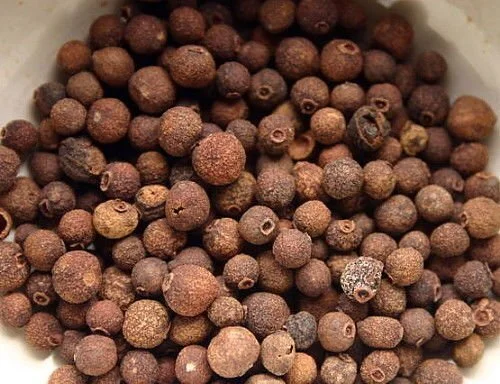The evergreen Allspice tree, or Myrtle Pepper, will grow in most areas of Europe and North America, but will not bear fruit. The dioecious plant is native to the temperate climates of the West Indies, Caribbean and Central America, but even there its production is iffy.
"There are allspice plants with female flowers that do not produce fruit even when they're pollinated by a male pollinizer," says Tasha Greer in Grow Your Own Spices. "There are plants that appear to have primarily female flowers that produce abundant fruit even without a male pollinizer. There are plants with predominantly male flowers that sometimes spontaneously produce fruit."
Even in Jamaica, where 90 percent of the world's commercial allspice is harvested, growers can't count on more than a third of their plantings to be productive in the seven years it takes for them to start putting on fruit. Most growers plant three plants from seed together in each patch in their orchards and cull out the non-productive trees after seven years without fruit.
This "plant three, wait and see" remains the most common approach to growing allspice for fruit production.
